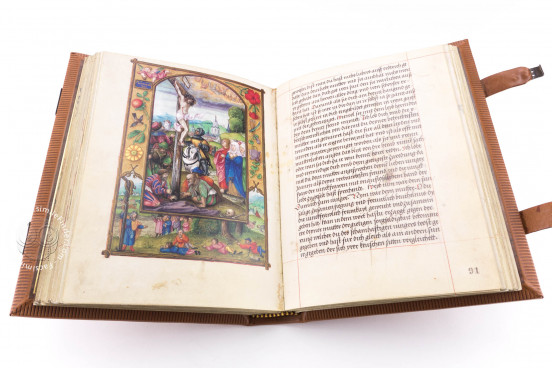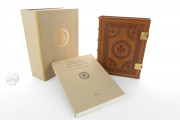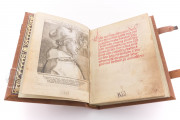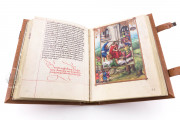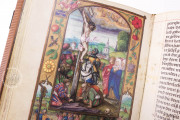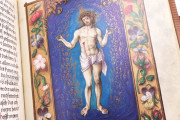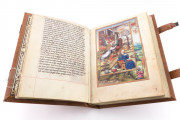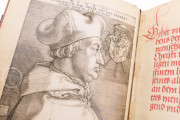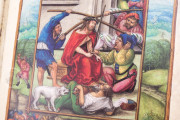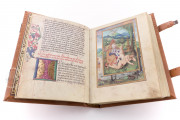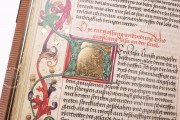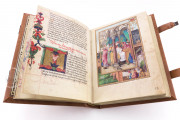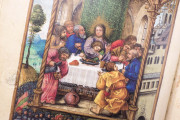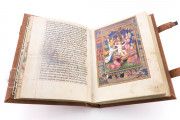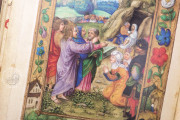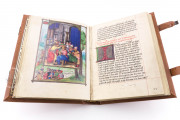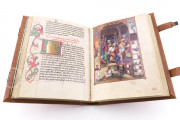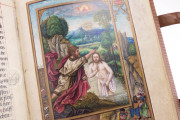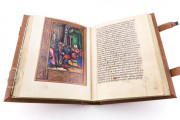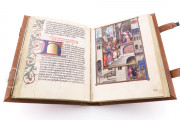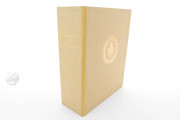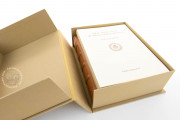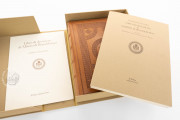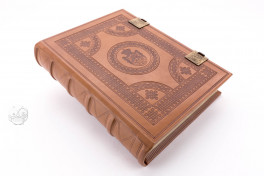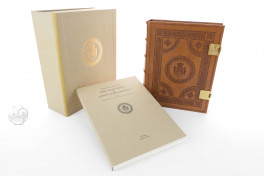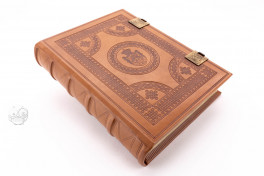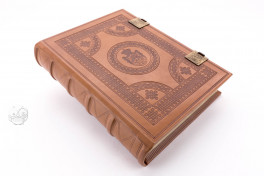The Glockendon Prayer Book is named after its artist, Nikolaus Glockendon, a member of a renowned family of artists who worked for some of the best-known art patrons of sixteenth-century Germany. It was produced in Nuremberg in 1534 for Albrecht of Brandenburg, a cardinal of the Catholic Church and Archbishop of Magdeburg and Mainz. The German prayer texts are illustrated by a series of forty-two miniatures in a highly detailed, vibrant, and naturalistic style that shows a strong influence of Netherlandish painting.
Few illuminated manuscripts from the late Middle Ages convey such perfect harmony as the Glockendon Hours. This exceptional work stands as a testament to the pinnacle of German book illumination.
A Remarkable Journey Through History
The manuscript's whereabouts following Albert of Brandenburg's death remain largely unknown. However, several ownership inscriptions provide glimpses into its journey.
One eighteenth-century notation identifies a Count Csobor as its proprietor. The manuscript likely entered the Csobor family—a distinguished Hungarian noble house—during the Thirty Years' War, when a family member presumably acquired it as spoils of war. The final Csobor descendant, facing financial difficulties, was compelled to sell various artistic treasures, including the Glockendon Hours.
Subsequently, a Viennese antiquarian sold the manuscript to Marchese Tommaso Obizzi del Cataio, himself the last of his lineage. Upon his death, the manuscript passed to the Casa d'Este through inheritance.
Nikolaus Glockendon, the Last Great Master of German Book Illumination
Nikolaus Glockendon, the most important and talented member of an artistic family, was active in Nuremberg during the first half of the sixteenth century. His work shows clear influence from contemporary German masters such as Dürer, Schongauer, and Cranach, evident in both the execution and coloration of his illustrations.
Nuremberg provided an ideal environment for Glockendon's artistry, which would represent the final flourishing of German book illumination. The city was experiencing its zenith—an era of prosperity driven by economic growth as well as advancements in sciences and arts at the dawn of the modern period.
Commissioned by a Prince of the Church
At twenty-three, Albert of Brandenburg was appointed Archbishop of Magdeburg and administrator of the Archdiocese of Halberstadt. Shortly thereafter, he became Archbishop of Mainz, and in 1518, he was elevated to Cardinal. This remarkably rapid advancement, even for someone from a prominent family, required substantial financial resources. Consequently, Pope Leo X granted Albert the exclusive right to sell indulgences throughout Germany. The repercussions of this indulgence trade are well-documented: they culminated in Martin Luther's posting of the Ninety-five Theses on the Wittenberg church door.
Nevertheless, Albert of Brandenburg was an accomplished theologian who maintained connections with prominent German Humanists, including his friend Erasmus of Rotterdam. A genuine patron of the arts, he adorned his residence with works by Germany's foremost masters. Despite his position after 1537/38, he was among those Church princes who attempted to mediate the religious disputes with Martin Luther.
Illustrations Depicting the Life of Christ
The manuscript features text that remains accessible to modern readers, complemented by forty-two meticulously colored miniatures depicting Christ's life and the sumptuous coat of arms of the Archbishop of Mainz.
The illustrations portray Old Testament scenes that prophetically anticipate New Testament events. These biblical narratives are set within distinctly medieval environments.
We have 3 facsimiles of the manuscript "Glockendon Prayer Book":
- Libro de Oración de Alberto de Brandenburgo facsimile edition published by M. Moleiro Editor, 1997
- Libro di Devozione di Alberto di Brandeburgo facsimile edition published by Il Bulino, edizioni d'arte, 1997
- Glockendon-Gebetbuch facsimile edition published by Faksimile Verlag, 1998

